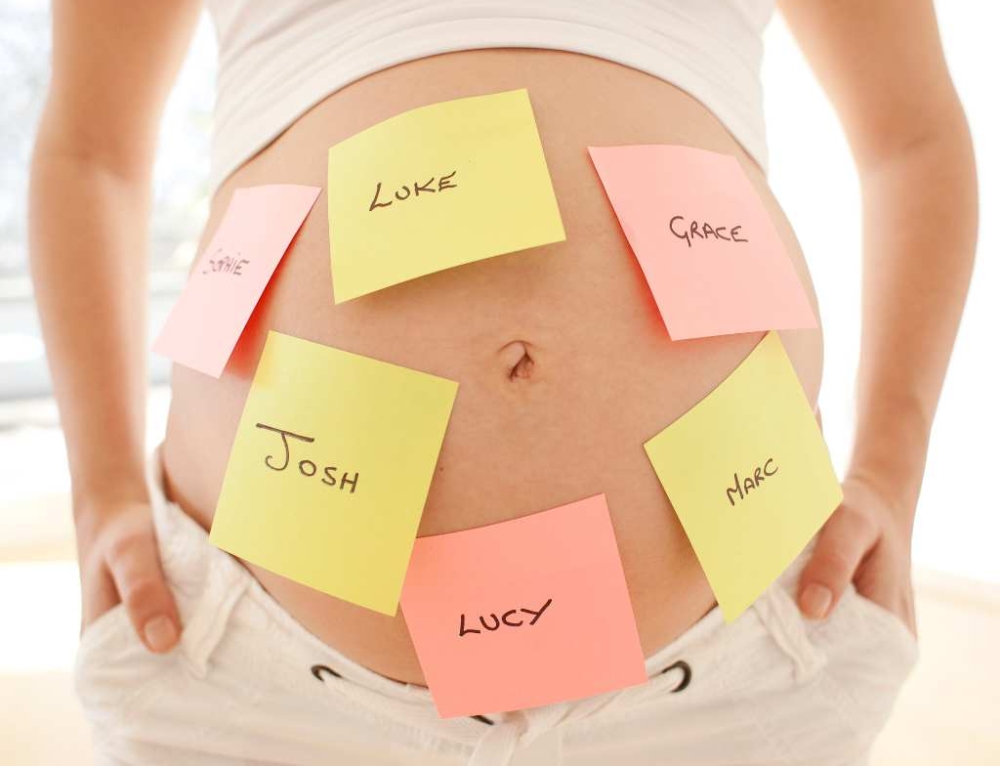What are the chances?
The odds of having multiples are influenced by many factors, and twinning rates have changed throughout the years. In fact, researchers have recorded an increase of nearly 60 percent since the early 1980s.
- Generally, your chances of having twins are about three in 100, or about three percent (it is important to note that these odds are based on populations, not individuals)
- The odds of conceiving triplets (naturally) is about one in 8,100.
- The odds of conceiving quadruplets (naturally) is predicted to be one in 729,000.
The statistics for higher order multiples are on the rise – researchers have noted a 400 percent increase in the rate of triplet births over the last 20 years.
It is estimated that 60 percent of triplets are the result of fertility enhancing treatments; while 90 percent of quadruplets and 99 percent are due to assisted reproductive technology (ART).
What is causing the rise in multiple births?
Women tending to wait until they’re older to have a baby and hormonal changes at this later stage in life make it more likely that the body will release more than one egg at a time – more than one fertilised egg often means more than one baby.
But most of the rise in multiple births is due to the use of fertility drugs and assisted reproductive technology (ART) to help women conceive. These treatments greatly increase a woman’s chance of having twins or higher-order multiples.
Twins
Twins are two offspring produced by the same pregnancy. Twins can either be monozygotic (identical), meaning that they develop from one zygote that splits and forms two embryos, or dizygotic (fraternal), meaning that they develop from two eggs, each fertilised by separate sperm cells. Twins are more or less equally likely to be female or male and, contrary to popular belief, the incidence of twins doesn’t skip generations.
Fraternal twins
Otherwise known as dizygotic (DZ), fraternal or non-identical twins are conceived when two eggs are released at a single ovulation and are fertilised by two different sperm. These two fertilised eggs then implant independently in the uterus. DZ twins share the same type of genetic relationship as non-twin siblings, hence the term fraternal.
Around two in three sets of twins are fraternal. These babies will be no more alike than siblings born at separate times. The babies can be either the same sex or different sexes, with the odds roughly equal for each.
Opposite sex twin pairs, which make up approximately one third of all twin births, are dizygoticas because different sex twins can not be identical.
Genetic factors in conceiving fraternal twins
If you are a fraternal twin yourself, or have fraternal twin siblings, you are more likely to conceive fraternal twins of your own.
Some women are genetically more likely to produce more than one egg during a menstrual cycle (hyperovulation). This makes it more likely that they will have twins.
Non-genetic factors in conceiving fraternal twins
There are also non-genetic factors that can make non-identical twins more likely, including:
- ethnic group – twins are more common in some ethnic groups than others
- the age of the mother – the older the mother, the higher the chance of twins
- whether the woman has already had children
- infertility treatment
Identical twins
Called (MZ), identical twins develop when one egg is fertilised by a single sperm and during the first two weeks after conception, the developing embryo splits into two. As a result, two genetically identical babies develop.
Around one in three sets of twins is identical. The biological mechanisms that prompt the single fertilised egg to split in two remain a mystery. Approximately one quarter of identical twins are mirror images of each other, which means the right side of one child matches the left side of their twin.
There’s no evidence that identical twins run in families.
Twin language
Twins have been known develop a special ‘language’ to communicate with each other, known as idioglossia. This is an unintelligible way of speaking that involves consonant substitution and/or lagging vowels and is unique to each set of twins.
Triplets, quadruplets, quintuplets …
While twins are the most common multiples born live, multiple births of as many as eight babies have been born alive, the first set on record to the Chukwu family in Texas in 1998; one died and seven survived. In 2009, a second set, the Suleman octuplets, was born in California USA.
Identical triplets or quadruplets are very rare and result when the original fertilised egg splits and then one of the resultant cells splits again (for triplets) or, even more rarely, a further split occurs (for quadruplets). Identical triplets occur in about one in a million pregnancies.
The pregnancy experience when carrying multiple babies
Healthy living
Very little research has been done on nutrition during multiple pregnancy, so the best advice is to eat a balanced, healthy diet. If you feel hungry, fill up on healthy snacks, such as fresh fruit, low-fat yoghurt or sandwiches filled with grated cheese, lean ham or mashed tuna. Expecting two or more babies doesn’t mean you have to eat significantly more than during a single pregnancy. You may be offered iron supplements during your pregnancy as you’re more at risk from anaemia during a twin pregnancy.
Weight gain
Mothers carrying multiples are expected to gain more weight during pregnancy than mothers carrying a single foetus. But exactly how much weight you should gain depends on your pre-pregnancy weight and the number of foetuses.
Specialised prenatal care
The need for frequent, intensive prenatal care is of the utmost importance in a multiple pregnancy. Because multiple pregnancies are automatically termed high-risk, the need for specialised health care is vital to ensuring that you and your babies receive the best care available.
Earlier birth
Twins and higher multiples are more likely to be born early. It’s usual for twins and multiples to be delivered before 38 weeks. Fewer than half of all twin pregnancies go beyond 37 weeks, and hardly any triplet pregnancies go beyond this stage. About 75 percent of triplets are born before 35 weeks.
Risks for mum
While most multiple pregnancies are healthy and result in healthy babies, there are more risks when pregnant with two or more babies:
- You have a higher risk of miscarriage, anaemia, haemorrhage, early labour and caesarean section or assisted ventouse or forceps delivery
- Up to 25 percent of multiple pregnancies will be complicated by pregnancy-related high blood pressure
- The risk of pre-eclampsia is three times higher for twin pregnancies and nine times higher for triplets
- You’re two to three times more likely to have gestational diabetes.
The multiple birthing experience
For the health and safety of both mother and babies, doctors and midwives will need to assess the mother’s individual situation and advise on whether she should attempt a vaginal delivery for multiple births or have a caesarean.
Vaginal delivery of multiples
As labour begins, the mother is likely to be connected to a foetal monitor so the doctor can check each baby’s progress. The interval between the birth of each baby delivered vaginally is usually less than 20 to 30 minutes. And here’s one piece of good news – because multiple-birth babies tend to be smaller than single ones, it’s easier to push them out. Luckily, they only come out one at a time!
Emergency caesarean
The crowded uterus can cause compression of the placenta or umbilical cord of any of the soon-to-be-born babies during labour. Prolonged compression may put one or more babies at serious risk as labour progresses during attempts at vaginal delivery. So prompt delivery by C-section may be necessary in these cases. Usually, if the first foetus is not head first, the babies will be delivered by caesarean.
Elective caesarean
Most triplets and other higher-order multiples are born by planned caesarean and many believe that you have to have a caesarean section with twins also. Mothers may choose to have an elective caesarean from the outset of their pregnancy, or their doctor may recommend a caesarean section later in the pregnancy as a result of potential complications.
A study in 2013 involving 106 participating centres in 25 countries came to the conclusion that, in a twin pregnancy of a between 32 weeks 0 days and 38 weeks six days, where the first twin is in cephalic presentation, planned cesarean section does not significantly decrease or increase the risk of foetal or neonatal death or serious neonatal disability, as compared with planned vaginal delivery. In this study, 44 percent of the women planned for vaginal delivery still ended up having cesarean section for unplanned reasons such as pregnancy complications.
Breastfeeding multiples
Breastfeeding is not only possible for mothers of multiple babies, it is probably one of the best things you could possibly do for your babies’ health. Breast milk contains the right balance of nutrients for your babies. The antibodies in breast milk will boost your babies’ immune systems and has special benefits for babies who are born prematurely, as are many twins and higher order multiples. Breastfeeding twins or other multiples also ensures frequent interaction between you and each of your babies.
Some mothers find that breastfeeding two babies at once works well and saves time. Others prefer to breastfeed each baby separately. Likewise, some babies might show a preference for individual feedings. Try different approaches or a combination — such as breastfeeding one baby at a time at night and two at the same time during the day — to see what might work best for you and your babies.







Leave A Comment
You must be logged in to post a comment.